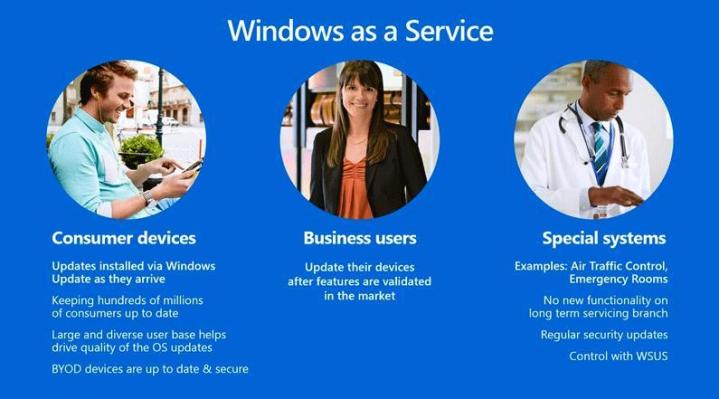
The screenshot notes that Windows updates will be easy to install, which may increase security associated with “Bring Your Own Device” policies. Business users will be able to update their devices after features have been validated on the market, and Microsoft appears to be targeting professional services heavily with Windows as a service.
In the picture, the company notes that it could work efficiently with air traffic control centers and emergency rooms. With instant access to Windows Server Update Services and regular security updates, Microsoft is positioning Windows as the ideal operating system.
At Ignite 2015 last week, Microsoft employee Jerry Nixon confirmed that Windows 10 may be the last of the operating system as we know it, according to The Verge.
“Right now we’re releasing Windows 10, and because Windows 10 is the last version of Windows, we’re all still working on Windows 10,” Nixon said.
Microsoft’s operating system isn’t dying off, per say, but it’s coming back with a new spin. Microsoft intends to market Windows as a service in the future. The company will allegedly go low on the pricing for Windows licenses, Computerworld reported. In turn, Microsoft hopes that it will increase device sales and its overall customer base.
Additionally, it appears that the company is aiming to update and improve Windows 10 as time goes on, rather than release a Windows 11. Windows 10 features such as the Start Menu are separate from apps, which will make it easier for Microsoft to roll out selective improvements (rather than a whole new operating system) in the future.
“Windows will be delivered as a service bringing new innovations and updates in an ongoing manner, with continuous value for our consumer and business customers,” the company said in a statement.
In other words, Windows isn’t going away. Microsoft is simply ready to make improvements to Windows 10 as necessary over time.
Editors' Recommendations
- Windows 11 might nag you about AI requirements soon
- You’re going to hate the latest change to Windows 11
- The most common Windows 11 problems and how to fix them
- Microsoft finds a sneaky way to slip more ads into Windows
- Intel’s new CPU feature boosted my performance by 26% — but it still needs work


